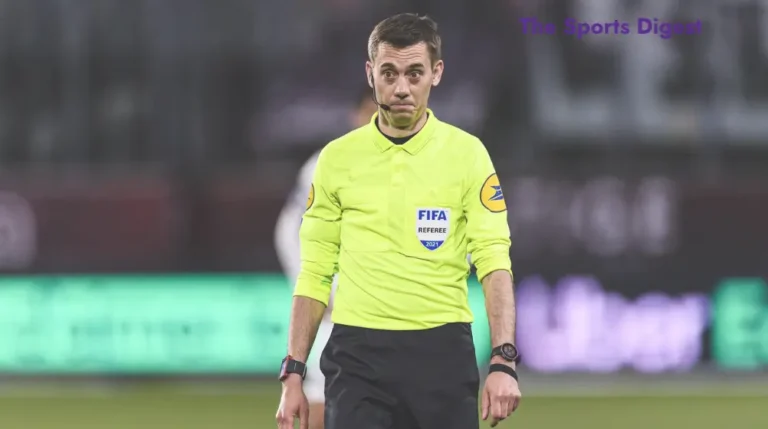Wesley Sneijder: Amsterdam’s Midfield Maestro
Football is more than just a game; it is a collection of deep memories that become a part of our lives. These moments go beyond the matches themselves, shaping our connection with the sport and marking significant chapters in our personal stories. For me, one unforgettable memory took place on a scorching July afternoon in 2010 in Amsterdam, when Wesley Sneijder played a pivotal role in one of the most iconic matches of his career, leading the Netherlands to a stunning victory over Brazil in the World Cup quarter-finals.
Table of Contents
The Setting: Museumplein, Amsterdam – July 2, 2010
On that day, I stood among thousands of fans in Museumplein, Amsterdam, watching the Netherlands take on Brazil in the 2010 World Cup quarter-final. The square was a sea of orange—flags waving, faces painted, and anticipation filling the air. This was not just another match; it was a battle between Brazil’s fluid style and a Dutch team determined to break past disappointments. At the heart of this Dutch squad was Wesley Sneijder, the diminutive playmaker who had just led Inter Milan to an extraordinary treble-winning season.
A Nervous Start: Brazil’s Early Dominance
The match began with Brazil in complete control. Their squad, featuring superstars like Kaká, Robinho, and Luís Fabiano, played with the kind of technical brilliance and fluidity that had made them tournament favorites. It took just 10 minutes for Robinho to break through the Dutch defense and score, sending a wave of disappointment through the crowd at Museumplein. The first half continued in the same fashion, with the Netherlands struggling to impose themselves against a dominant Brazilian side. By halftime, the mood in the square was tense and filled with uncertainty.
The Turning Point: Sneijder Sparks the Comeback
Football, however, is a game of two halves. Shortly after the restart, a moment of chaos changed everything. Wesley Sneijder sent in a cross that confused the Brazilian defense, leading to Felipe Melo accidentally heading the ball into his own net. The reaction in Museumplein was explosive—hope was rekindled. Then, in the 68th minute, the defining moment arrived: Wesley Sneijder, standing at just 5’7″, rose above everyone to head home a corner that Dirk Kuyt had flicked on.
The Euphoria of Victory
The celebration that followed was indescribable. Strangers hugged, beer sprayed into the air, and sheer joy swept across the square. Wesley Sneijder, the man who had dominated European football with Inter Milan just weeks earlier, had now inspired the Netherlands to a famous victory. When the final whistle confirmed the 2-1 win, the celebrations lasted deep into the Amsterdam night.
Sneijder: The Star of the 2010 World Cup
For many, Wesley Sneijder was the true standout of the 2010 World Cup. Despite losing the Golden Ball to Diego Forlán, his five goals and masterful performances had driven the Netherlands to the final. His vision, passing, and ability to deliver in crucial moments cemented his reputation as one of the world’s best playmakers.
The Manchester United Transfer Saga
After that tournament, Wesley Sneijder became the subject of intense speculation about a move to Manchester United in 2011. Reports suggested that Sir Alex Ferguson was eager to bring him to Old Trafford. However, despite months of speculation, the transfer never happened, leaving United fans disappointed. It remains one of football’s great “what if” moments.
A Different Path: Galatasaray and Beyond
Instead of moving to the Premier League, Wesley Sneijder took a surprising route, joining Galatasaray in January 2013. While he showed flashes of brilliance—such as his stunning goal against Juventus in the Champions League—questions about his consistency and fitness followed him. Some felt he had left the elite level of European football too soon.
2014 World Cup: Another Moment of Brilliance
The 2014 World Cup offered Wesley Sneijder another chance to shine. Louis van Gaal had doubts about his fitness, but he proved his worth when it mattered most. His thunderous equalizer against Mexico in the last 16 kept Dutch hopes alive, as the Netherlands eventually secured third place in the tournament.
The Decline and Final Years
As the years passed, Sneijder’s influence faded. His 2017 move to Nice generated little excitement, marking a clear decline in his career. Unlike his time under José Mourinho, where he flourished at Inter Milan, his relationships with later coaches proved more complicated, affecting his performances.
Sneijder’s Lasting Legacy
Despite his decline in later years, Sneijder will always be remembered for his prime. The midfield maestro who led Inter Milan’s treble-winning season, the playmaker whose vision unlocked defenses, and the hero whose goals against Brazil in 2010 brought ecstasy to the Netherlands. His career spanned Ajax, Real Madrid, Inter Milan, Galatasaray, and beyond, but it was those few magical weeks in South Africa 2010 that defined his greatness. For those who witnessed it, the memories will last a lifetime.
Have you ever read an article like this?
There are no reviews yet. Be the first one to write one.






